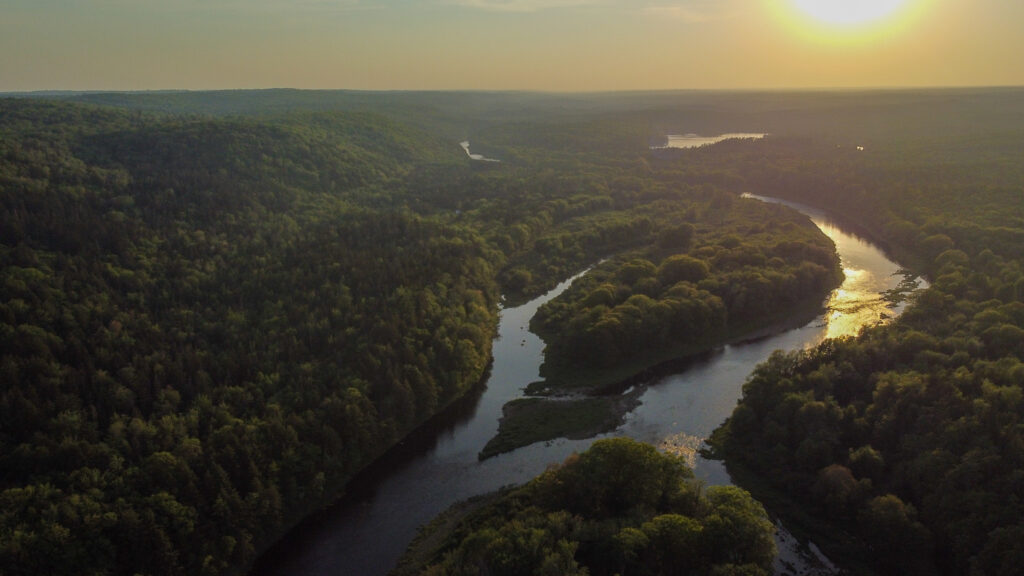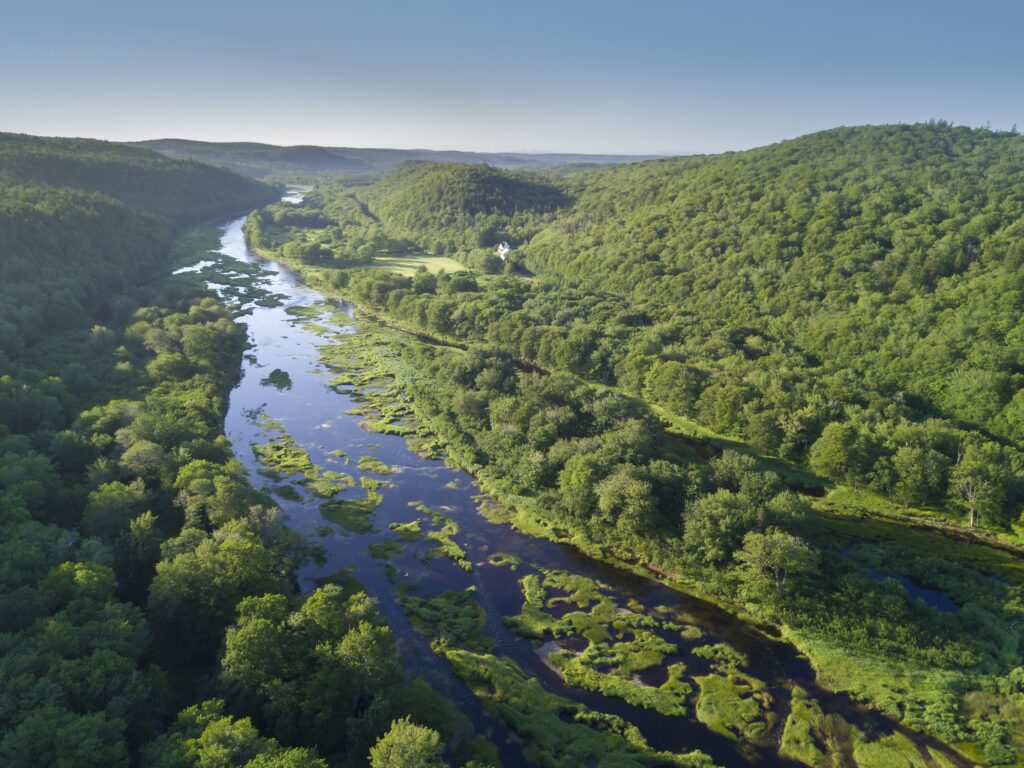Archibald Lake adds to St. Mary’s River conservation legacy
28 Aug 2023

St. Mary’s River, by A for Adventure.
On August 28, 2023, efforts to protect the beloved St. Mary’s River reached another exciting milestone. At a press conference in Sherbrooke, the Province announced the greatly anticipated official designation of the Archibald Lake Wilderness Area, building on our recent celebration of three new conservation lands nearby. In all, the Province and the Nature Trust now protect over 11,000 acres of outstanding freshwater and forest wilderness and 54 kilometres of ecologically-rich shoreline on the St. Mary’s River.
The newly announced Archibald Lake Wilderness Area protects three lakes and extensive mature forests, including over 700 acres of old-growth hardwood stands. The Nature Trust’s conservation lands will protect 500 acres of old-growth forests, rare Acadian floodplain forests, and habitat for nationally endangered wildlife including a diversity of birds, turtles, and Atlantic salmon.
With less than 1% of Nova Scotia’s old-growth forests remaining, over 95% of floodplain forests lost to clearing across the province, and biodiversity loss accelerating at an alarming rate, the new protected areas represent significant conservation wins, both for biodiversity and for resilience against climate change impacts.
These protected shoreline habitats support irreplaceable biodiversity while also providing critical ecological functions. The floodplain forests, for example, control water flow, sedimentation, and erosion, helping to keep the river cool, clear and fast-flowing, which is critical for the health of the river and the species that depend on it for their survival. The large areas of mature forests and wetlands also provide effective carbon sinks, an important nature-based solution to climate change mitigation and resilience.
The new protected areas also preserve fantastic places for anglers, paddlers, and other nature lovers to explore and enjoy the wild river and surrounding lakes. The announcements are welcome news for the local community and many others who cherish the river and view it as an irreplaceable part of their history, culture, way of life and future. A healthy, intact St. Mary’s River is recognized and greatly valued as a recreational, economic, ecotourism and educational asset.

Aerial view of St. Marys River, by Scott Leslie.
The St. Mary’s River Association has worked tirelessly for decades on river restoration, salmon conservation and stewardship. The association and other environmental and community groups have lobbied for protected areas and fought proposals for resource development that could harm the watershed’s health and viability.
The Province has protected a significant number of government-owned lands, and with much of the shoreline privately owned and habitats facing increasing risk, the Nature Trust’s unique work in private land conservation fills the final gap in ensuring the river’s natural legacy is forever protected. Many landowners, volunteers, and donors – especially the David and Faye Sobey Foundation – have also played a critical role in the river’s protection.
Much of Nova Scotia is a mosaic of relatively small, fragmented, but ecologically important privately owned parcels (almost 70% of the province), interspersed with government-owned lands, just like on the St. Mary’s. To reach Nova Scotia’s ambitious target of 20% protected areas by 2030, both government and private land conservation will be critical. To ensure that 20% includes the best, most ecologically important lands and that these protected areas are contiguous and provide the landscape connectivity needed for long-term ecological viability, collaboration between government and land trust partners is crucial.
The Nature Trust is proud of our long-standing collaboration with the Province, as well as many community and conservation partners in protecting Nova Scotia’s unique natural legacy. We applaud the Province for the Archibald Lake designation and look forward to more shared conservation successes ahead!
